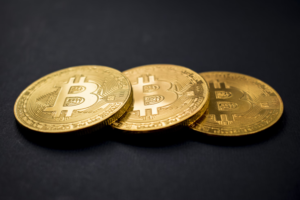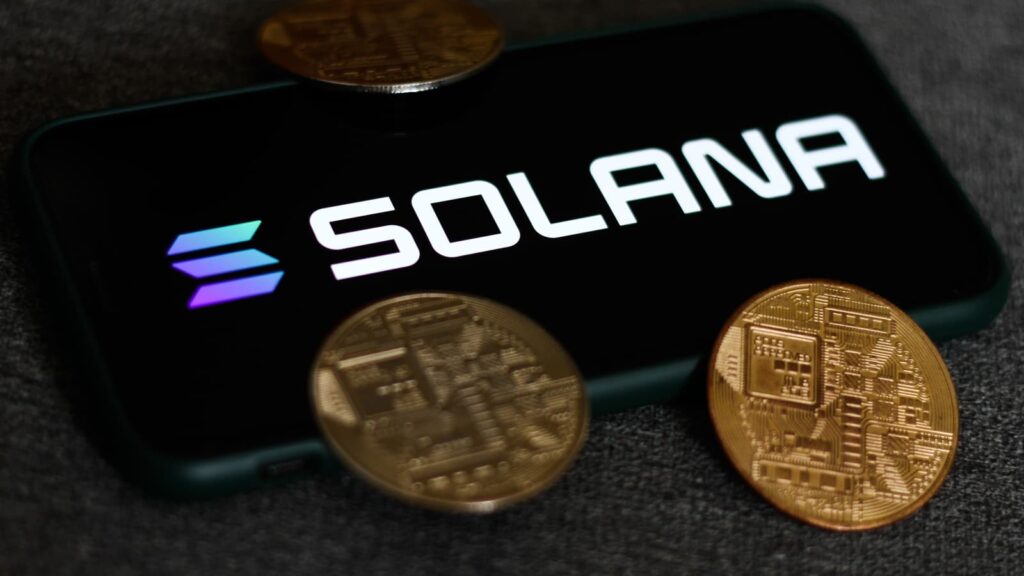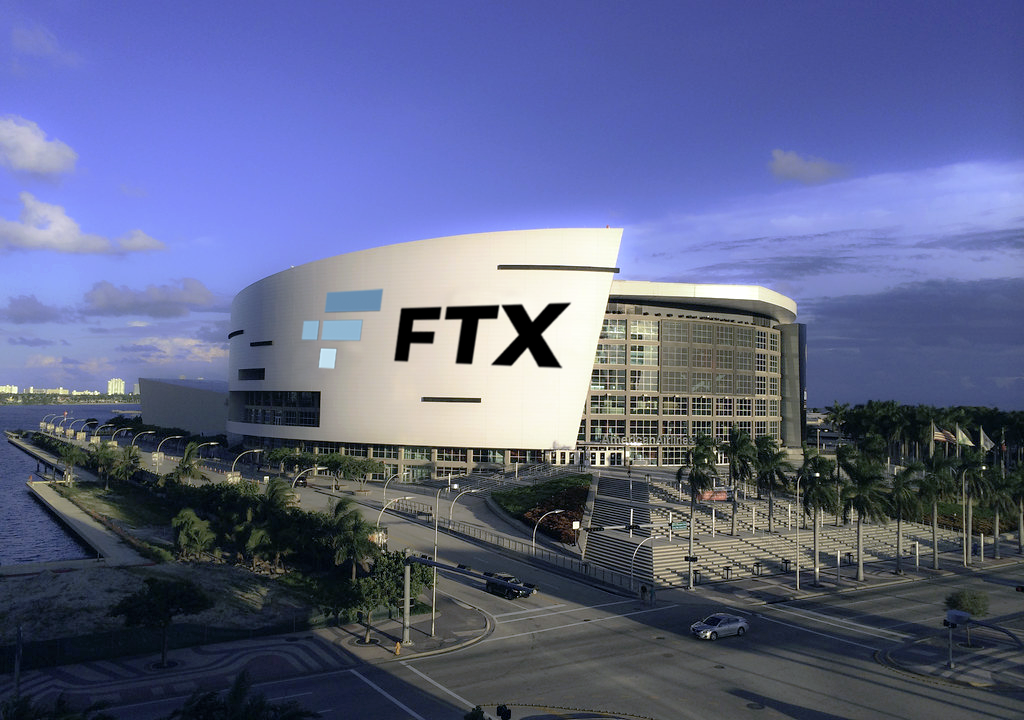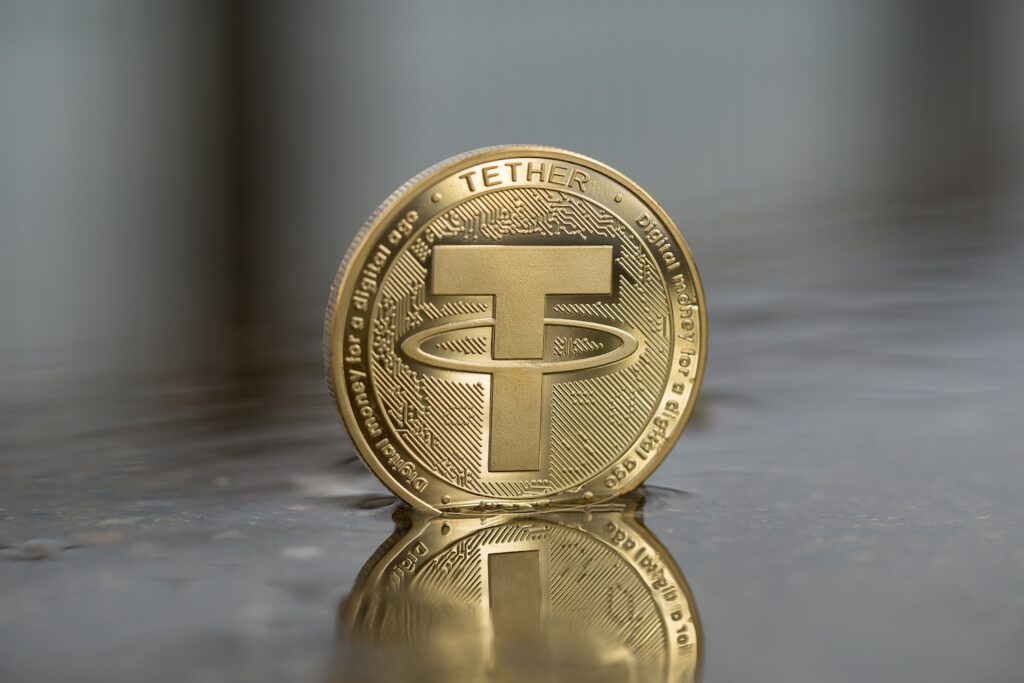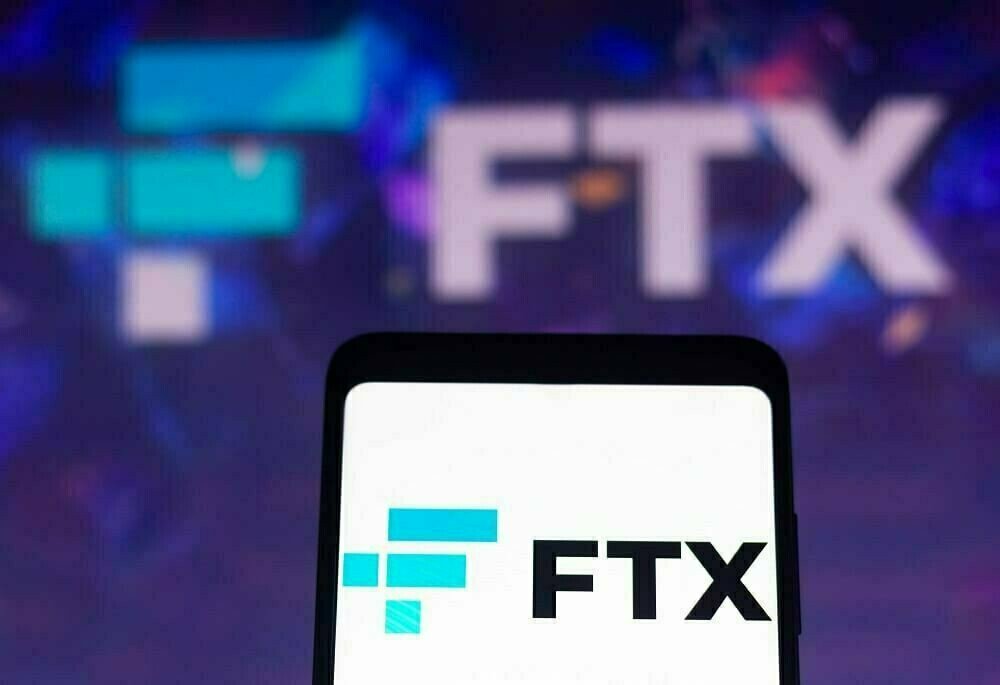The Solana memecoin frenzy is showing no signs of slowing down, as one daring trader managed to turn a mere $226,000 investment into an astonishing $1.6 million windfall, all thanks to a token featuring a beanie-wearing dog as its mascot.
Between December 13 and 15, this intrepid crypto enthusiast decided to dive headfirst into the world of memecoins by purchasing over 19 million Dogwifhat (WIF) tokens.
These tokens, with their endearing dog-themed branding, made their debut on the Solana network’s trading platforms.
Remarkably, the trader acquired these tokens at an average price of just $0.01137 each.
As of the latest data, the total value of these tokens now stands at approximately $1.69 million, delivering the trader a staggering profit of approximately $1.47 million within a mere five days.
This remarkable success story mirrors a broader trend that is currently sweeping through the Solana ecosystem.
Memecoins built on the Solana network have been posting extraordinary gains, capturing the attention of the crypto community.
Notably, on December 8, a dog-themed memecoin known as Bonk (BONK) achieved a significant milestone by becoming the third-largest memecoin in terms of market capitalization.
READ MORE: Palau Launches Phase Two of PSC Program with Ripple Partnership for Digital Currency Expansion
This achievement placed Bonk alongside the likes of fellow dog-themed memecoins such as Shiba Inu and Dogecoin, surpassing even Pepecoin, the frog-themed memecoin.
In the 30 days leading up to December 11, the price of Bonk experienced a staggering surge of 370%, soaring from $0.0000028 to its current price of $0.00002.
This impressive growth outpaced other prominent dog memecoins like SHIB and DOGE, which saw comparatively modest increases of 20% and 35% during the same period.
Interestingly, the fervor surrounding Bonk had a ripple effect on sales of Solana’s Saga mobile phone. Following its launch, owners of the Solana Saga phone received an unexpected airdrop of 30 million Bonk tokens.
Capitalizing on the rising token price, users seized the opportunity to turn a profit by purchasing the phone and subsequently selling the tokens they received.
In summary, the Solana memecoin craze continues to captivate the crypto world, with traders reaping substantial rewards in a matter of days.
The soaring popularity of memecoins within the Solana network, exemplified by the success of Bonk, demonstrates the ongoing appetite for speculative and meme-driven cryptocurrencies.
On December 18, metaverse technology company Improbable made an important announcement, revealing the sale of its gaming venture, The Multiplayer Group (MPG), to Keywords Studios for a staggering £76.5 million ($97.1 million).
Improbable’s CEO, Herman Narula, described Keywords as a “like-minded business partner” and expressed his excitement for MPG’s new journey.
Keywords Studios is well-known in the gaming industry for its collaborations with major players like Activision Blizzard, Bethesda, Zenimax, Epic Games, and 2K.
This strategic move aligns with Improbable’s venture strategy for 2024, marking a significant shift from their initial acquisition of MPG for approximately £30 million back in 2019.
The company also unveiled its 2024 predictions, emphasizing the enduring significance of the metaverse and Web3 technologies.
Narula confidently asserted that the metaverse, fueled by the convergence of gaming, VR/XR, and Web3, will be a growth hotspot in 2024, shaping the future of virtual events.
Narula’s insights highlight a shift in business interests toward decentralized metaverse platforms, emphasizing brands’ desire for autonomy and the right business model.
Improbable anticipates a proliferation of experiences within decentralized environments as businesses graduate from platform experimentation.
READ MORE: Taiwanese Authorities Issue Warning Against Cryptocurrency Betting on Upcoming Presidential Election
Improbable, a Softbank-backed metaverse developer, foresees increased consolidation and streamlining across the gaming, Web3, and crypto sectors in 2024, leading to a more robust and interconnected startup ecosystem.
In 2023, Improbable collaborated with Major League Baseball to create a virtual baseball stadium, providing fans with immersive digital reality experiences.
The company envisions further integration of physical-digital crossovers within the gaming world and anticipates the growing utilization of generative artificial intelligence (AI) for content creation and business applications.
Peter Lipka, Improbable’s co-founder and chief operating officer, predicts the emergence of AI-generated 3D interactive objects as a significant trend in 2024.
Improbable’s optimism about the future of Web3 and gaming echoes sentiments from other industry experts.
Executives Yat Siu and Johnson Yeh from the GameFi sector anticipate more users entering Web3 through blockchain games in the coming year.
As the metaverse continues to evolve, Improbable and its contemporaries are poised to play a pivotal role in shaping the digital landscape of the future.
The crypto community is eagerly anticipating the potential approval of a spot Bitcoin exchange-traded fund (ETF) in the United States, with some experts cautioning that this could have unintended consequences for cryptocurrency exchanges.
Industry insiders are forecasting that a spot BTC ETF could become tradable as early as 2024.
This development, coupled with Bitcoin’s upcoming block reward halving expected in April, has led Blockstream CEO Adam Back to believe that BTC’s price could surge to $100,000.
Additionally, proponents like Jan3 CEO Samson Mow suggest that the approval of a spot Bitcoin ETF in the U.S. could potentially propel Bitcoin to as high as $1 million within a matter of “days to weeks.”
However, the outlook for centralized cryptocurrency exchanges is not as rosy, according to ETF Store president Nate Geraci and Bloomberg ETF analyst Eric Balchunas.
Geraci recently expressed his concerns on X (formerly Twitter), stating that once approved, a spot Bitcoin ETF in the U.S. could lead to a “bloodbath” for cryptocurrency exchanges.
Geraci argues that retail investors trading spot Bitcoin ETFs will enjoy the benefits of institutional-level trade execution and lower commissions.
In contrast, users of crypto exchanges will continue to face higher trading costs and “retail trade execution,” which Geraci emphasizes must improve in order to remain competitive with a spot Bitcoin ETF.
Eric Balchunas underscores that a spot Bitcoin ETF is expected to carry a trading cost of just 0.01%, which aligns with the average fee for ETF trading.
READ MORE: Palau Launches Phase Two of PSC Program with Ripple Partnership for Digital Currency Expansion
In comparison, exchanges like Coinbase currently charge fees that can go as high as 0.6%, depending on factors such as the cryptocurrency, transaction size, and trading pairs.
The introduction of a spot Bitcoin ETF is likely to intensify price competition within the crypto industry.
Balchunas believes that this will redirect funds away from exchanges that invest heavily in advertising, such as during events like the Super Bowl, to attract users.
Balchunas commented, “It would be the last ‘Crypto Super Bowl’ if they launch ETFs because ETFs are such a lean and cost-effective industry.
Some of these crypto exchanges have been capitalizing on their high fees, and this shift could change the landscape significantly.”
Historically, Coinbase has derived a substantial portion of its revenue from transaction fees. In 2022, the platform generated $2.4 billion in transaction fees, representing 77% of its total net revenue of $3.1 billion.
Nonetheless, Coinbase has been actively diversifying its revenue streams by offering additional income-generating services like subscriptions, aiming to reduce its reliance on fees.
In the quarter ending on October 31, the now-defunct cryptocurrency exchange FTX has been burning through an astonishing $53,000 per hour on bankruptcy lawyers and advisers, according to the latest compensation filings.
Court records from December 5 to December 16 reveal that bankruptcy lawyers have amassed a staggering $118.1 million in fees from August 1 to October 31.
Over this 92-day period, this amounts to a jaw-dropping daily expenditure of $1.3 million or an astonishing $53,300 per hour.
Topping the list of charges is the management consulting firm Alvarez and Marshall, demanding a colossal $35.8 million for their services during these three tumultuous months.
Following closely behind, global law firm Sullivan & Cromwell billed $31.8 million, with an average hourly rate of $1,230.
Global consulting firm AlixPartners enters the fray with $13.3 million for professional services linked to forensic investigations, while Quinn Emanuel Urquhart & Sullivan submitted a bill for $10.4 million during the same timeframe.
READ MORE: Kazakhstan’s Digital Tenge Shines in Successful Pilot Project, Gears Up for 2024 Expansion
Various smaller advisory firms also added to the tally, contributing more than $26.8 million to the overall expenses.
A pseudonymous FTX creditor shared figures on December 17, suggesting that the total legal fees fully paid since the commencement of the FTX bankruptcy case have soared to an astonishing $350 million.
Meanwhile, an earlier report filed on December 5 by the court-appointed fee examiner, Katherine Stadler, raised “significant areas of concern” regarding billings from larger advisory firms such as Sullivan & Cromwell, Alvarez & Marshall, and others, covering the period from May 1 to June 31.
The report cited apparent issues like top-heavy staffing, seemingly excessive meeting attendance, fees associated with non-working travel time, and various technical and procedural deficiencies in time entries, including vague and lumped entries, particularly concerning billings from Alvarez & Marshall.
In summary, the bankruptcy proceedings of FTX have resulted in a staggering expenditure on legal and advisory services, with some firms charging astronomical fees.
Concerns have been raised about billing practices and the transparency of these expenses, further complicating the complex bankruptcy process.
On December 16, the peer-to-peer trading platform NFT Trader fell victim to a security breach, resulting in the theft of millions of dollars’ worth of nonfungible tokens (NFTs).
NFT Trader officially acknowledged the incident on social media, urging users to take action by revoking delegations to two specific addresses: 0xc310e760778ecbca4c65b6c559874757a4c4ece0 and 0x13d8faF4A690f5AE52E2D2C52938d1167057B9af.
The stolen NFTs encompassed a variety of collections, including at least 13 Mutant Ape Yacht Club tokens, 37 Bored Ape tokens, VeeFriends, and World of Women NFTs, resulting in collective losses estimated at nearly $3 million, as reported by Revoke.cash.
In the aftermath of the hack, social media was flooded with rumors and misinformation.
Furthermore, the full extent of how many hackers exploited the security vulnerability remains unclear.
One of the attackers, in a public message, attributed the initial exploit to someone else and stated their intention to ransom the NFTs for their return.
The attacker’s message revealed a seemingly contradictory motivation, claiming to be initially interested in acquiring “residual garbage” but later realizing the potential value of the NFTs.
Despite this revelation, the attacker declared their indifference to personal gain and expressed a preference for scavenging leftover items.
READ MORE: Kazakhstan’s Digital Tenge Shines in Successful Pilot Project, Gears Up for 2024 Expansion
Moreover, the attacker admitted to having limited technical skills and proposed that victims pay a 10% bounty in Ether in exchange for the return of their NFTs.
They explained the difficulties they encountered in retrieving all affected NFTs simultaneously, which they claimed required substantial energy and time investment.
Their message emphasized the expectation of a deserving reward for their actions.
In an unexpected turn of events, one of the victims reported receiving a rare NFT along with 31 ETH, which was valued at nearly $70,680 at the time.
This development left the victim astonished, prompting them to question the surreal nature of the situation.
In conclusion, the security breach on NFT Trader on December 16 led to the theft of valuable NFTs, sparking confusion and speculation on social media.
The attacker’s motives remained enigmatic, with their actions blending a pursuit of value with an unconventional preference for “residual garbage.”
As the situation unfolded, victims were faced with unexpected gestures from the attacker, adding further complexity to an already perplexing incident.
Tether, the company responsible for the stablecoin Tether, has publicly revealed letters it sent to United States lawmakers addressing their concerns regarding the Department of Justice’s (DOJ) inquiries into the potential illicit use of its stablecoin.
These communications were dispatched to members of the U.S. Senate Committee on Banking, Housing, and Urban Affairs as well as the U.S. House Financial Services Committee on two separate occasions, November 16 and December 15.
In these letters, Tether emphasized its strong commitment to combatting the illicit utilization of stablecoins.
The primary objective of these letters was to respond to calls from Senator Cynthia Lummis and Representative French Hill made in October.
These lawmakers had urged the DOJ to thoroughly assess the extent to which both Binance and Tether might be providing substantial support and resources for terrorism.
These calls came after Hamas executed a coordinated attack against Israel on October 7, with the implication that some of the funding for these illicit activities was facilitated through cryptocurrency transactions.
In response, Tether outlined its existing measures to prevent illicit activities, including a Know Your Customer (KYC) program, transaction monitoring systems, and a proactive approach to identifying suspicious accounts and activities.
The company expressed its willingness to cooperate with law enforcement agencies globally, including the identification and freezing of addresses related to sanctions, illicit activities, or terrorist financing.
READ MORE: Bitcoin Price Soars as 2024 Promises Resurgence Amidst Changing Landscape
Tether also noted that its client reviews continue beyond the onboarding process, with the use of surveillance monitoring tools to continuously track client activity.
They specifically mentioned the use of the Reactor tool from Chainalysis, a leading blockchain surveillance tool employed by various U.S. government agencies.
Furthermore, Tether disclosed its collaboration with the Federal Bureau of Investigation (FBI) as part of its efforts to assist law enforcement in combating illicit activities and aiding victims in recovering their funds.
In a related development, Tether announced a voluntary wallet-freezing policy on December 9.
This initiative provides secondary market controls to freeze any activity associated with sanctioned individuals listed by the United States Office of Foreign Assets Control Specially Designated Nationals List.
Previously, in 2022, Tether had resisted proactively freezing wallets linked to suspicious activities.
However, increased regulatory scrutiny of cryptocurrency firms in the U.S. and worldwide prompted the company to reconsider its stance.
Tether’s CEO, Paolo Ardoino, stated, “Tether seeks to be a world-class partner to the U.S. as we continue to assist law enforcement and expand dollar hegemony globally.”
This increased scrutiny in 2023 has favored the market share of USDT, which currently stands at $90 billion according to CoinMarketCap.
Creditors of the now-defunct cryptocurrency exchange, FTX, have taken a significant step in their efforts to recover their losses.
They have recently submitted a revised Chapter 11 plan of reorganization to the United States Bankruptcy Court for the District of Delaware.
This updated proposal suggests a crucial change in how customer asset claims will be assessed, potentially impacting the recovery amounts for affected customers.
Under this amended plan, the value of customer asset claims would be retroactively set to the moment when FTX faced its demise in November 2022.
This means that any claims submitted by customers to compensate for their losses would be calculated based on the value of their assets as of November 11, 2022, the date of FTX’s bankruptcy filing.
The conversion rates specified in a conversion table would be used to convert crypto assets into their equivalent cash values for this assessment.
However, a significant development has occurred since the bankruptcy filing. Crypto prices have experienced substantial fluctuations, with Bitcoin being a prime example.
At the time of the bankruptcy filing, Bitcoin was valued at $17,036, but as of the latest update, it stands at a significantly higher $42,272.
In a related development, FTX was granted approval on November 30th to sell approximately $873 million worth of trust assets.
READ MORE: Bitcoin Price Plummets as SEC Rejects Coinbase’s Rule Request
The proceeds from this sale are intended to be directed towards repaying the creditors of the collapsed exchange.
Joseph Moldovan, who leads the business solutions, restructuring, and governance practices at Morrison Cohen, a prominent New York-based law firm, commented on the intricacies of the FTX bankruptcy.
He noted the complexity of the entities involved and the substantial debt they held, making this bankruptcy case particularly unique.
On December 7th, the FTX 2.0 Customer Ad Hoc Committee put forth a proposal to modify the reorganization plan with the aim of balancing the interests of various stakeholders involved in the process.
Meanwhile, concerns and scrutiny have intensified regarding the activities of crypto assets associated with both FTX and Alameda Research.
Reports on December 9th disclosed that wallets linked to these defunct entities had transferred digital assets worth $23.59 million to multiple crypto exchanges, raising questions about the handling of these assets during the bankruptcy proceedings.
The Ministry of Finance in Palau has officially kickstarted the second phase of its Palau Stablecoin (PSC) initiative.
The news was confirmed by Jay Hunter Anson, a cybersecurity consultant in Palau who also serves as an advisor to the Ministry of Finance.
Anson made this announcement on December 15 through a post on the social media platform X (formerly known as Twitter).
In this new phase, Palau has set its sights on expanding its collaboration with Ripple, a leading blockchain technology company.
The goal is to leverage Ripple’s central bank digital currency (CBDC) platform and tap into their technical expertise. PSC is a digital currency that is pegged to the United States dollar and operates on Ripple’s XRP Ledger.
Furthermore, Anson revealed that the second phase of the PSC pilot program will focus on forging new partnerships for marketing and sustainable development goals.
Additionally, it will prioritize the creation of a digital ecosystem and increased user engagement, all while adhering to regulatory compliance standards.
Anthony Welfare, a CBDC strategic advisor at Ripple, also commented on the launch of the second phase of the PSC pilot program.
Welfare emphasized the advantages of blockchain-based digital currency, including reduced transaction fees and the potential to mitigate the environmental impact of currency circulation.
He also highlighted the unique challenges faced by Palau, such as the complexity of moving traditional currencies across its 340 islands and the high costs of mobile data in the country.
Welfare pointed out a notable feature of PSC: the ability for Palau residents to conduct offline transactions using this blockchain-based digital currency, even during power outages.
The Ministry of Finance in Palau had previously announced the success of the first phase of the PSC program on December 7.
This initial phase spanned three months and involved 168 volunteers who were government employees.
These volunteers were given 100 PSC each to use at local retailers that were part of the program.
Transactions were made through mobile phones by scanning QR codes.
Both the participating retailers and volunteers provided positive feedback regarding their experiences with this innovative digital currency.
Bitcoin’s on-chain transaction fees have become a topic of debate as the cost of sending BTC has surged.
According to data from BitInfoCharts as of December 17, the average transaction fee stands at nearly $40, marking the highest average since April 2021.
This spike in fees is attributed to the recent wave of Bitcoin Ordinals inscriptions, resulting in elevated costs for all network users.
Mempool.space reports a vast backlog of unconfirmed on-chain transactions, with even $2 transactions having no on-chain priority.
Currently, there are approximately 350,000 transactions waiting to be confirmed, making casual on-chain spending unfeasible for many smaller investors.
This situation has sparked a heated debate among Bitcoin proponents.
While some are critical of the impact of Ordinals on fees, others argue that double-digit transaction costs are a glimpse into the future. They emphasize the need for embracing layer-2 solutions like the Lightning Network to accommodate mass adoption.
Popular commentator Hodlonaut believes that demanding low fees for “Level 1” transactions is not only ignorant but also detrimental to Bitcoin’s competition-based nature and long-term value.
Hodlonaut suggests that if users can’t afford to move funds on the base layer in the long run, it makes more sense to explore alternative cryptocurrencies like Bitcoin Cash or embrace layer-2 solutions.
Despite the rising fees, Bitcoin continues to function as intended, according to commentator Beautyon.
READ MORE: Pro-XRP Lawyer Accuses SEC Chair of Gaslighting Amid Crypto Rule Dispute
He posits that Ordinals might expedite the adoption of layer-2 solutions, leaving those who haven’t embraced them confused and upset but ultimately adhering to the network’s rules.
Bitcoin veteran Adam Back, co-founder of Blockstream, shares the perspective that expanding layer-2 capabilities is the way forward.
He believes that attempting to halt certain transactions on the Bitcoin network will only lead to more creative workarounds. High fees can drive the adoption of layer-2 solutions and stimulate innovation.
In terms of mining revenue, data from Blockchain.com shows that miners are enjoying their best USD revenues in two years.
This aligns with Bitcoin trading at around $42,000 toward the December 17 weekly close, although it remains significantly below its all-time high of $69,000 reached in November 2021.
In conclusion, Bitcoin’s on-chain transaction fees have risen sharply, sparking debates within the community.
While some see this as a temporary issue, others view it as a catalyst for the adoption of layer-2 solutions, emphasizing the need to adapt and innovate in the evolving cryptocurrency landscape.
As the Taiwan presidential election scheduled for January 13, 2024, approaches, Taiwanese citizens have been cautioned against using cryptocurrency betting platforms to place wagers on the election outcome.
This advisory comes amidst an ongoing investigation into such activities, leading to the questioning of several individuals.
Recent local reports have revealed that a number of Taiwanese residents have engaged in election betting on the decentralized platform Polymarket.
According to these reports, “several individuals have been summoned for investigation by prosecutors and investigators for participating in Polymarket bets.”
However, it is essential to note that participating in election-related gambling activities in Taiwan is explicitly prohibited by law and may potentially violate Article 88-1 of the Election and Recall Act.
The consequences of violating this law include the possibility of facing up to six months of imprisonment, detention, or a fine of up to 100,000 New Taiwan dollars, which is equivalent to approximately $3,188.
READ MORE: Gemini Earn Creditors Face Drastic Payout Reduction in Proposed Reorganization Plan
Interestingly, Polymarkets faced regulatory challenges in the United States in 2022.
The company, headquartered in New York, encountered legal proceedings initiated by the Commodity Futures Trading Commission (CFTC) in January 2022.
The CFTC alleged that Polymarket had been operating an “illegal unregistered or non-designated facility” since June 2020.
Notably, during the 2020 U.S. presidential election, Polymarket experienced a surge in trading activity on its platform, marking a significant milestone by achieving a new volume record of over $10 million.
In light of these developments and the legal implications of participating in election-related gambling activities, Taiwanese authorities have issued a stern warning to their citizens against using cryptocurrency betting platforms for wagering on the upcoming presidential election.
As the election date draws nearer, it is crucial for individuals to abide by the country’s laws and regulations to avoid potential legal consequences.


